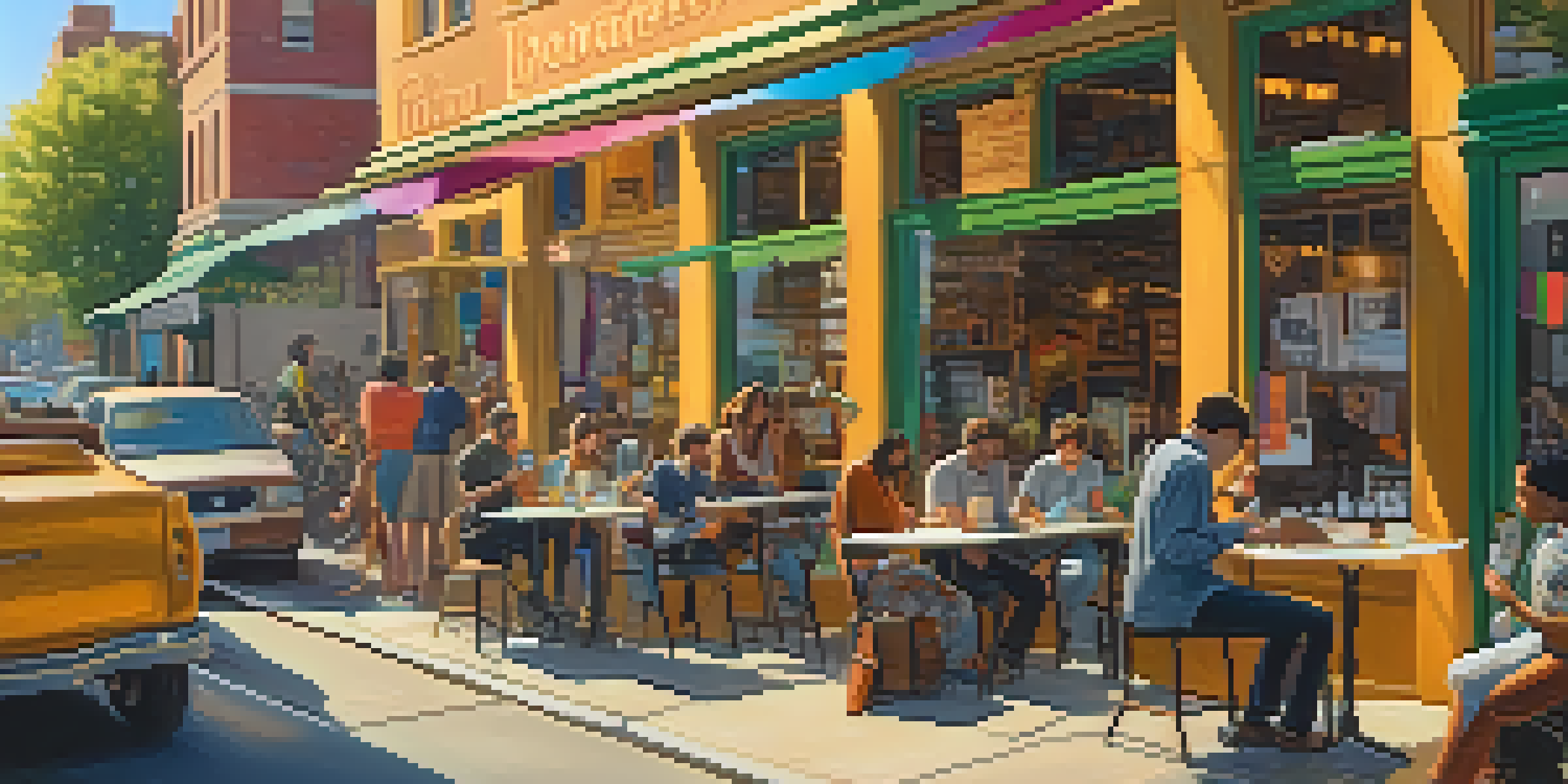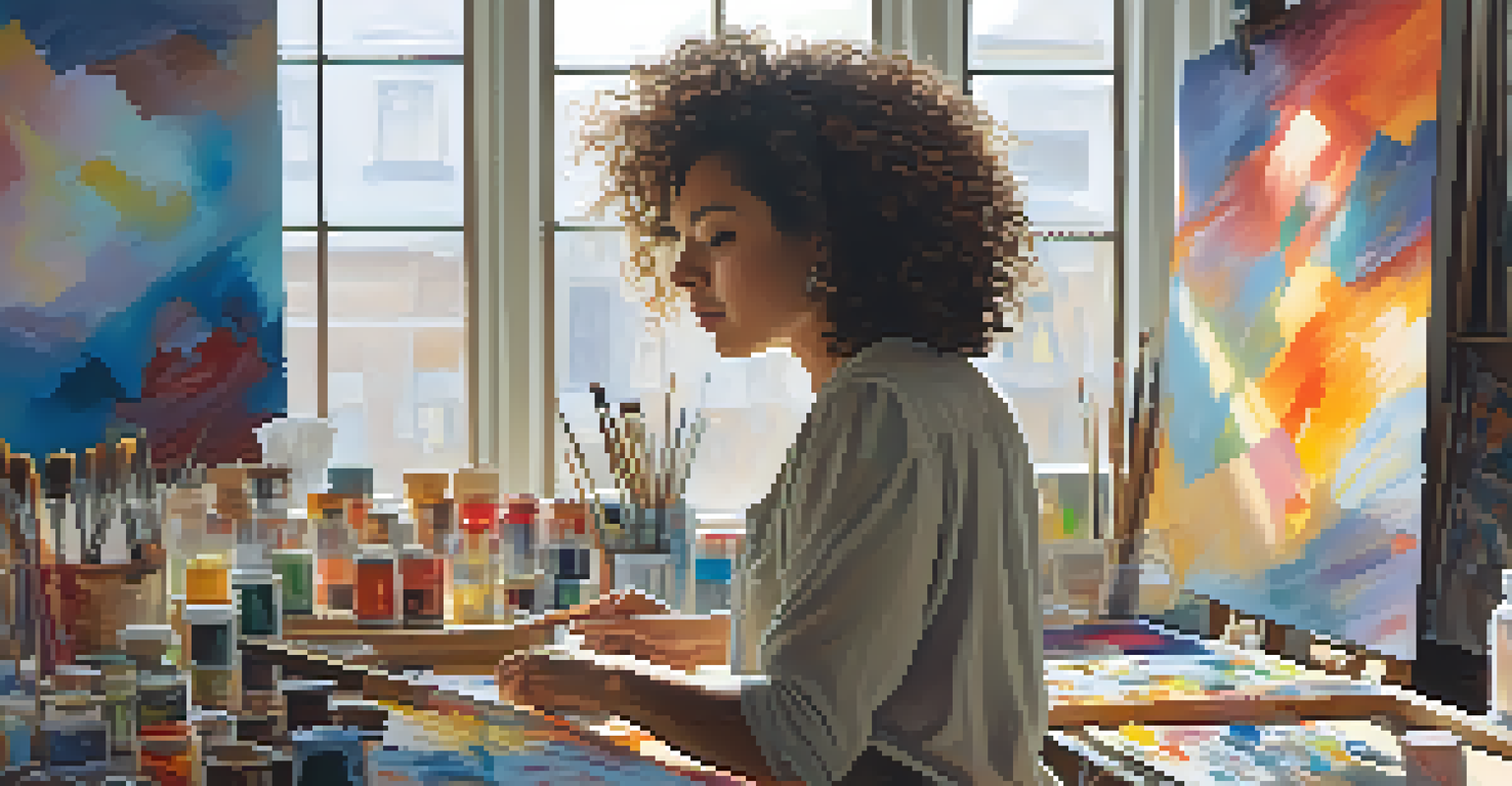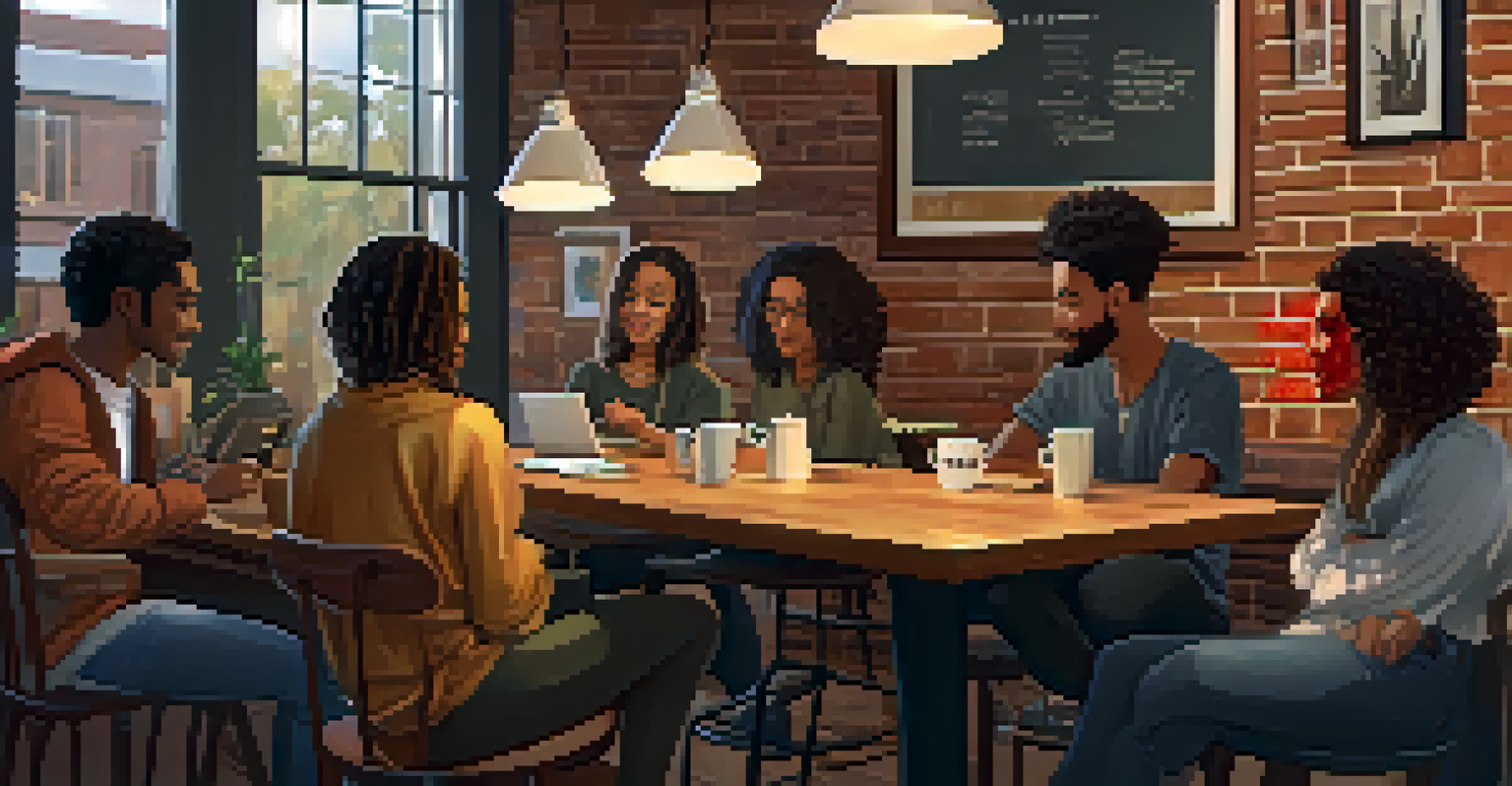The Rise of Independent Artists in the Digital Age

Understanding the Independent Artist Movement
Independent artists, often referred to as 'indie artists,' are creators who choose to produce and distribute their work outside of traditional record labels or publishing houses. This movement has gained momentum over the past decade, fueled by the accessibility of technology and the internet. Artists now have the freedom to express their creativity without the constraints often imposed by major corporations.
The future of art is in the hands of the independent artist.
Consider the rise of platforms like Bandcamp and SoundCloud, where musicians can upload their tracks and connect directly with fans. These platforms offer a space where art thrives on merit rather than marketing budgets. This shift empowers artists to build their own brands and cultivate loyal followings, all while maintaining creative control.
Moreover, the indie movement isn't limited to music; it's also flourishing in visual arts, literature, and other forms of creative expression. The digital age has democratized art, allowing diverse voices to emerge and be heard, enriching the cultural landscape for everyone.
The Role of Social Media in Artist Promotion
Social media has become an essential tool for independent artists looking to promote their work and engage with audiences. Platforms like Instagram, TikTok, and Twitter provide a vast playground for creativity, allowing artists to showcase their personalities and connect with fans on a personal level. This direct interaction helps build a community around their art.

For instance, many artists use TikTok to share behind-the-scenes glimpses of their creative process or to launch music challenges that encourage fan participation. These strategies not only boost visibility but also foster a sense of belonging among followers, creating a more invested audience. The viral nature of social media can propel an artist into the spotlight overnight.
Indie Artists Thrive Online
Independent artists now have the tools to create, promote, and distribute their work outside traditional channels thanks to digital platforms.
However, it's important to note that while social media offers incredible opportunities, it also requires consistent effort and engagement. Artists need to balance their creative output with the demand for content on these platforms, which can be a challenge but ultimately enhances their visibility and reach.
Streaming Services: A Double-Edged Sword
Streaming services like Spotify and Apple Music have reshaped how we consume music and, in many ways, how independent artists reach their audiences. On one hand, these platforms provide unparalleled access for listeners, allowing them to discover new music easily. For indie artists, being featured on playlists can lead to significant exposure and growth in their fanbase.
Creativity takes courage.
On the other hand, the revenue model of streaming can be challenging for artists. Most independent musicians earn a fraction of a cent per stream, making it difficult to sustain a living solely through streaming income. This reality often pushes artists to seek alternative revenue streams, such as merchandise sales or live performances.
Despite these challenges, many independent artists have successfully navigated the streaming landscape by leveraging data analytics to understand their audience better. This informed approach allows them to create targeted marketing strategies and maximize their reach, demonstrating resilience and adaptability in an ever-evolving industry.
Crowdfunding: Empowering Artists and Fans
Crowdfunding has emerged as a powerful tool for independent artists, allowing them to finance their projects directly through fan support. Platforms like Kickstarter and Patreon enable artists to present their creative ideas to the public and request funding from their community. This not only helps artists cover production costs but also fosters a deeper connection with their supporters.
For example, many musicians have turned to crowdfunding to finance album recordings or tours, offering exclusive rewards in exchange for financial backing. This model shifts the power dynamic, as fans feel more invested in the success of the projects they support. It creates a sense of shared ownership and collaboration between artists and their audiences.
Social Media Builds Community
Social media enables indie artists to engage with fans directly, fostering a sense of belonging and collaboration.
Furthermore, crowdfunding campaigns often serve as a marketing tool, generating buzz and anticipation for an upcoming release. By engaging fans early on, artists can build momentum and ensure a successful launch, proving that community support can be a game changer in the indie scene.
The Impact of Digital Art Platforms
Digital art platforms like DeviantArt and Behance have revolutionized how visual artists share and sell their work. These platforms allow artists to showcase their portfolios, connect with other creatives, and even sell prints or digital downloads. The accessibility of these platforms has opened the door for countless artists to gain visibility and recognition.
In addition, the rise of NFTs (non-fungible tokens) has introduced a new way for digital artists to monetize their work. By creating unique digital assets that can be bought and sold on blockchain platforms, artists can retain ownership and control over their creations in a way that was previously impossible. This innovation has sparked discussions about the future of art ownership and value in the digital age.
While the NFT market has its critics, it showcases the potential for independent artists to explore new avenues for revenue and recognition. As technology continues to evolve, so too will the opportunities for artists to innovate and thrive in their respective fields.
Challenges Faced by Independent Artists Today
Despite the many opportunities available to independent artists in the digital age, challenges remain. One of the biggest hurdles is the oversaturation of content online, making it difficult for artists to stand out in a crowded marketplace. With millions of voices vying for attention, finding an audience can feel overwhelming.
Moreover, the constant need to create content for social media can lead to burnout among artists. Balancing the demands of artistic creation with the pressure to engage and promote can be taxing, especially for those without a dedicated team. This struggle often leads to feelings of isolation and stress, detracting from the joy of creating.
Crowdfunding Fuels Artist Projects
Crowdfunding platforms empower artists to finance their creative endeavors through direct support from their communities.
However, many artists are finding ways to navigate these challenges by building supportive networks and collaborating with fellow creatives. By pooling their resources and sharing experiences, independent artists can uplift each other, fostering a sense of community that helps alleviate some of the pressures of the industry.
The Future of Independent Artists in a Digital World
As the digital landscape continues to evolve, so too does the future for independent artists. With advancements in technology, new platforms, and emerging trends, artists have more opportunities than ever to connect with their audiences and monetize their work. The growth of virtual reality and augmented reality, for example, could open new doors for creative expression and engagement.
Furthermore, the increasing acceptance of independent art in mainstream culture signals a shift in the industry. More consumers are seeking out authentic and diverse voices, leading to a greater appreciation for the work of indie artists. This trend suggests a promising future where independent creators can thrive alongside traditional institutions.

Ultimately, the resilience and creativity of independent artists will continue to drive their success in a digital world. By embracing innovation and community, they can navigate challenges and seize opportunities, ensuring their voices remain vital in shaping the cultural landscape.